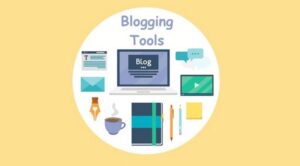E-Learning for Change Management: Building Skills to Navigate Organizational Shifts
In an era where change is the only constant, navigating organizational shifts has become a critical skill set for professionals across industries. E-learning has emerged as a powerful tool in this quest, offering flexible and accessible resources to build competencies for change management.
For students and professionals alike, e-learning illustrates a broader trend toward flexible, accessible education. Just as students leverage online platforms to, for example, reach out to a philosophy essay writer to pay to write essay and craft an insightful paper, professionals utilize e-learning to navigate change management. This parallel underscores the universal value of e-learning in promoting continuous growth and flexibility. Let’s explore how e-learning can guide us through change in the workplace.
E-Learning and Change Management: A Synergistic Relationship
E-learning has emerged as a cornerstone in building this adaptability, offering a synergistic relationship with change management initiatives. By providing access to a wide range of resources and tools, e-learning platforms enable employees to acquire new skills and knowledge on demand. This just-in-time learning approach is pivotal in building an adaptable workforce capable of navigating organizational transformations.
E-learning doesn’t just deliver information; it helps you develop specific skills crucial for effective change management. These include strategic thinking, leadership, and communication.
Key Components of Effective E-Learning for Change Management
Interactive Content and Real-World Simulations
E-learning offers interactive content and real-world scenarios. This approach transforms theoretical knowledge into practical skills, enabling learners to experience firsthand the challenges and solutions involved in change management.
By engaging in simulations that mimic actual workplace situations, individuals can practice their response to change in a safe, controlled environment, building confidence and competence that translate to real-world success.
Customization and Flexibility in Learning Paths
The one-size-fits-all approach to education is a relic of the past. Effective e-learning for change management recognizes individuals’ diverse goals and learning approaches. Let’s say the goal is for an employee to improve their coding skills. E-learning offers multiple options, including coding bootcamps, traditional computer science degree programs, and various online courses. This flexibility not only enhances the learning experience but also ensures that the skills developed are directly applicable to each learner’s professional context, maximizing the impact of the training.
Feedback Mechanisms and Community Support
Learning is a social process, and the best e-learning platforms incorporate feedback mechanisms and opportunities for community engagement. Interactive forums, peer reviews, and real-time feedback from instructors help learners refine their understanding and application of change management concepts.
Moreover, being part of a learning community fosters a sense of belonging and support, encouraging continuous growth and development. This collaborative environment is crucial for nurturing the skills necessary to lead and support change initiatives within an organization.
Implementing E-Learning Solutions for Change Management
The successful implementation of e-learning strategies requires thoughtful planning and execution. Below, we explore five key strategies that can help organizations effectively leverage e-learning for change management.
- Align E-Learning Goals with Organizational Objectives. Before launching any e-learning program, it’s essential to align its goals with the organization’s broader objectives. This means identifying the specific change management competencies that are most relevant to the organization’s strategic direction and ensuring that the e-learning content is designed to build these skills. By doing so, the e-learning initiative will have a clear purpose and can be directly tied to business outcomes, increasing its relevance and impact.
- Customize Learning Content to Meet Employee Needs. E-learning programs should be tailored to meet the workforce’s diverse needs. Customizing content to address these specific needs will make the learning experience more relevant and impactful for each participant, facilitating better retention and application of change management principles.
- Foster an Interactive and Collaborative Learning Environment. Change management is not just about acquiring knowledge; it’s about building the capacity to think critically and collaborate effectively in the face of change. Implementing interactive elements, such as group discussions, live webinars, and collaborative projects, into the e-learning program can enhance engagement and foster a sense of community among learners. These interactive experiences allow employees to share insights, challenge assumptions, and apply what they’ve learned in a collaborative setting.
- Leverage Technology to Provide Flexible Learning Opportunities. The power of e-learning lies in its flexibility. Organizations can allow employees to access learning materials anytime, anywhere. Offering mobile learning options and on-demand resources ensures that employees can engage with the content at a time and place that suits them best, making it easier to fit learning into their busy schedules.
- Measure and Adapt the E-Learning Program. Implementing an e-learning solution is an ongoing process, not a one-time event. To ensure the program remains effective and relevant, organizations should establish metrics to measure its impact on change management capabilities and business outcomes. This includes tracking engagement levels, assessing knowledge retention, and collecting feedback from participants. By regularly reviewing these metrics, organizations can identify areas for improvement and adapt the e-learning content and delivery methods to meet the needs of their employees better.
By adopting these strategies, organizations can effectively implement e-learning solutions that prepare their workforce for change and empower them to lead it.
Conclusion
In the evolving landscape of the modern workplace, the capacity to adapt to and manage change is indispensable. Through the strategic implementation of e-learning solutions, organizations can cultivate a workforce that is prepared for the inevitable shifts.
By aligning e-learning initiatives with organizational goals, fostering interactive learning environments, and continuously measuring and adapting programs, companies can transform their approach to change management. Ultimately, this proactive strategy ensures that organizations are not just reacting to change but are ahead of the curve, ready to embrace new opportunities with a knowledgeable, skilled, and adaptable team.





